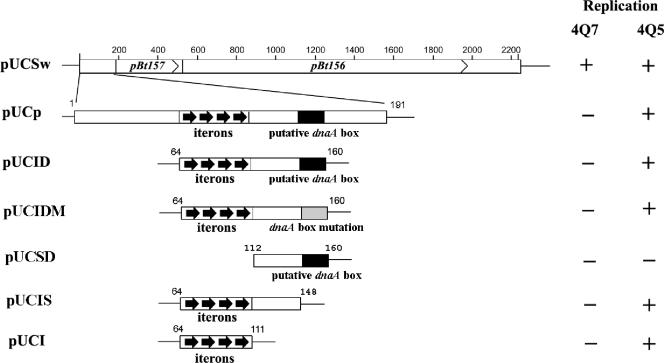FIG. 1.
Schematic diagram of the plasmids used to define the replication origin of the minireplicon of pBtoxis. pUCSw contains the 2.2-kb minireplicon of pBtoxis with pBt157 and pBt156 coding for, respectively, ORF157 and ORF156; pUCp contains the 191-bp upstream sequence from pBt157; pUCID contains a 97-bp sequence which includes the iteron sequence, 37-bp spacer, and putative dnaA box motif; pUCIDM is identical to pUCID, except that the putative dnaA box motif was replaced with 5′-CCCCAAGAC-3′; pUCIS contains the iteron sequence and 37-bp spacer; pUCSD contains 37-bp spacer and putative dnaA box motif; and pUCI contains only the iterons. The arrows indicate the 12-bp A+T-rich direct repeats (iterons). The black box and gray box represent, respectively, the putative dnaA box motif and the mutation of the putative dnaA box motif. pUCSw, pUCp, pUCID, and pUCI are all derivatives of pUCCl, the parental plasmid incapable of replicating in Bacillus thuringiensis subsp. israelensis. The ability (+) or inability (−) of each plasmid to replicate in B. thuringiensis subsp. israelensis strain 4Q7 cured of native plasmids or strain 4Q5, which contains parental pBtoxis, is also shown. Gene terminology follows that used by Berry et al. (3).

